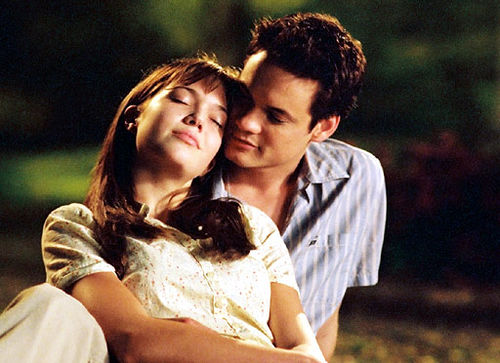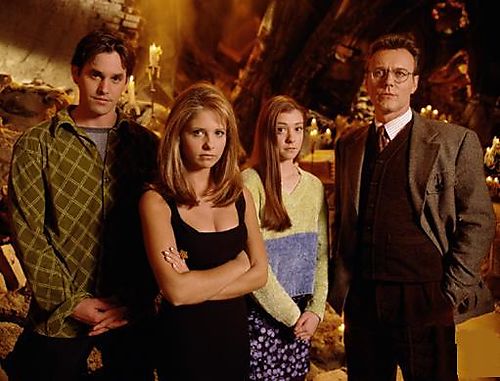by Lynn Hirschberg, New York Times, September 5, 1999
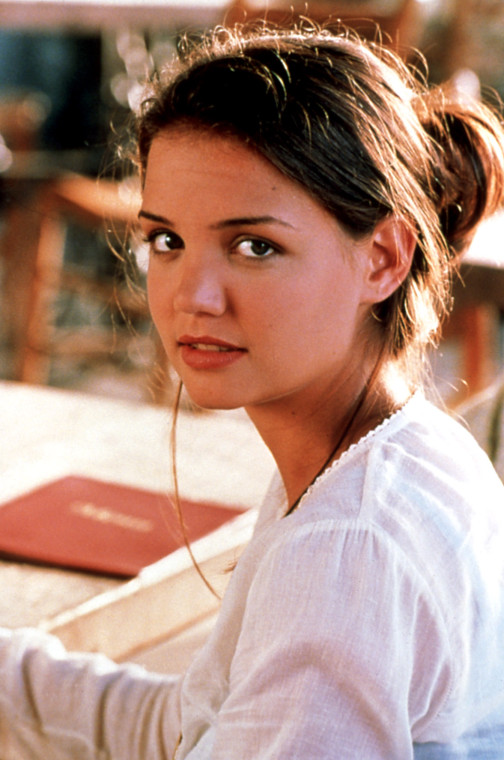
The most popular actresses on television today are very young and brunet. There is Katie Holmes, who stars as a high-schooler on “Dawson’s Creek,” and Jennifer Love Hewitt, who starred for several years as a teen-ager on Fox’s “Party of Five” and will star this fall in a spinoff of that show called “Time of Your Life.”
All of a sudden, it is that easy. Teen-agers are big business in the entertainment industry. Never has there been so much opportunity for the young and the hungry. Consider James Van Der Beek of “Dawson’s Creek,” a show that was first shown on the Warner Brothers’ Network (WB) two seasons ago and became an instant sensation among teen-age viewers. Most people older than, say, 21 have perhaps never heard of James Van Der Beek, who, like Holmes, plays a high-school student on the show, even though he is 22 years old. But the movie Van Der Beek made after the show caught on, “Varsity Blues,” earned $17.5 million in its opening weekend last January, thanks to the support of teen-age girls who flock to almost anything that centers on boys and love and high school. Van Der Beek is now a bankable Hollywood star.

“Dawson’s Creek” didn’t start the boom; it probably began with Baz Luhrmann’s 1996 hip-L.A.-youth version of, as it was called, “William Shakespeare’s Romeo and Juliet” (which starred Leonardo DiCaprio). When entertainment executives talk about this boom — and at times it seems they talk about little else — they attribute it simply to what they call “the Demographic.” The teen-age children of the baby-boom generation happen to form the largest audience of teen-agers in history. Hollywood, of course, has always cared about the young, but it is the numbers that have made teen-agers a late-90’s obsession. There is a huge viewership, spearheaded by teen-age girls, who will pretty much see or watch anything as long as the actors and actresses look like teen-agers too.
“It’s getting to the point where agencies don’t want to sign anyone over 22,” says Brian Swardstrom, a partner at the Endeavor Agency. He is joking — a little. He represents James Van Der Beek. “It’s understandable. There are young actors who were complete unknowns two years ago, who are making $3 million a movie today.” Young actors like Heath Ledger and Brad Renfro and Barry Watson — actors whose names may hardly be recognized by adults.

Networks are convinced that the teen-age audience is a highly desirable niche mostly because advertisers think so — boys and girls are making many of their own consumer choices before they are out of puberty, and advertisers want to reach them. (“Advertisers love to think that they are branding their products in the minds of young viewers,” says Lee Gabler, the agent who heads the Creative Artists Agency’s television department.) And the networks are hoping that by attracting new 14-year-old viewers, they will halt the slip in network viewership and maybe lock in future adult TV watchers.
Fox had the idea first. When the network began in 1987, it focused on the young (in those days, defined broadly as 18- to 34-year-old viewers), but Rupert Murdoch, who owns Fox, wanted a full-service network, and there was a conscious decision to widen the programming spectrum. When Garth Ancier, who had been at Fox in the early days, became president of entertainment of the fledgling WB network, he concentrated on youth-niche programming and drove the content down to meet the new teen-age boom. “It was a decision born out of necessity,” Ancier, now entertainment president of NBC, explains. “There was a clear shot underneath the big three networks who have to do broad-based programming. Our target was 12 to 34, and our competitors couldn’t really hit that target. And the younger half of that demographic is very attractive to advertisers.”
With shows like “Buffy, the Vampire Slayer,” “Felicity” and “Dawson’s Creek,” WB has become the network to copy. This past spring, some 30 TV pilots, out of a total of roughly 110 produced by the networks, were constructed around teen-age characters. That’s a lot of roles to fill. “It’s difficult to cast these shows,” Ancier says. “For one thing, you almost never have high-school-age actors and actresses playing high-school students.” There just aren’t many 14- or 15-year-olds who can act. At the same time, there aren’t that many 20-year-olds who can act — or look 14 or 15. “You really have to beat the bushes to find talent,” Ancier says.
The new fall teen shows are virtually all one-hour dramas — sitcoms built around teen-agers don’t seem to work. These new shows come in two types: either they are set in a high school and revolve around popular versus unpopular girls or they unfold in a big family (like the successful WB show “7th Heaven”) with at least two of the children in high school and at least one of them a Katie Holmes clone. The Katie Holmes type is a throwback to the 50’s: she is a smart girl next door (as opposed to the babe-o-rama blondes). In a 90’s twist, though, she might have sex, but only if she’s really in love.
“I thought all this would kind of fizzle out,” says Kevin Williamson, who created “Dawson’s Creek” and wrote the first two “Scream” movies, which also helped fuel the boom. “But there is a real audience out there. They don’t want to see Bruce Willis or Mel Gibson. They want their own stars like Leo.”
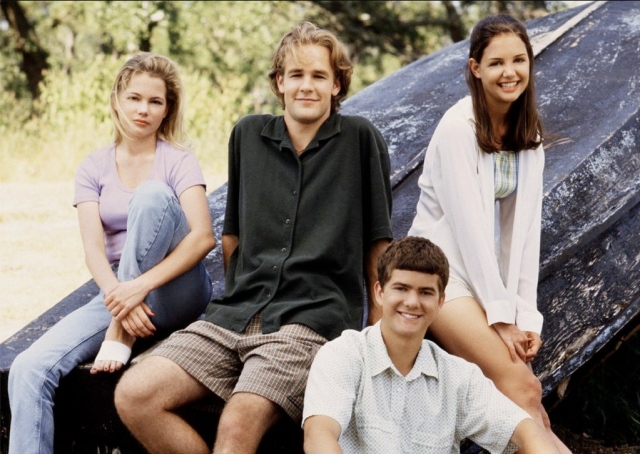
Williamson’s work has a distinct style: his characters are acutely self-aware and able to verbally pinpoint infinitesimal shifts in their angst-filled lives. Although “Dawson’s” is full of soap-opera twists — Dad dates a younger woman, buildings burn, kids drink too much and there’s sex, sex, sex — the main action concerns the quartet of characters announcing their feelings in a second-by-second breakdown that is breathtaking in its narcissism. “The dialogue and the show speak to a confused teen-age audience,” Williamson says. “And I happen to love that time of life.”
It’s a fantasy version of youth, complete with witty comebacks and enormous sexual confidence. But clearly it sells. “It is a fact that teen-age girls watch high-school shows and teen-age boys watch wrestling — which is why this season you’ll see a lot of high-school shows and wrestling,” says a network president who says he is embarrassed by this development. “Show me a show that works, and I’ll show you a hundred look-alikes.”
The look-alikes, of course, need their own stars. Which is why Hollywood is filled just now with would-be Lana Turners — or would be Katie Holmeses, anyway.
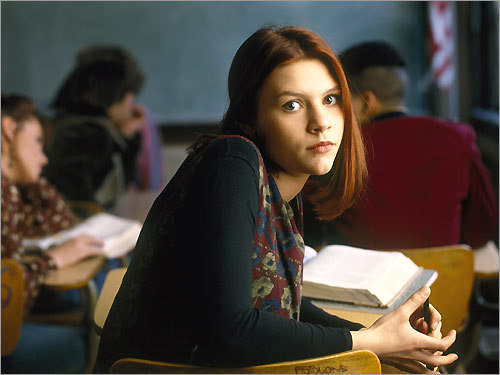
Shane West is kind of celebrating tonight. Last week, he wrapped his first starring role in a movie, a comedy called “I’ll Be You” based loosely on ”Cyrano de Bergerac,” and this afternoon, he finished the first day of rehearsal on his new TV show, “Once and Again,” which was created by Edward Zwick and Marshall Herskovitz and is one of the more highly touted new shows this fall. Zwick and Herskovitz were the creators of “Thirtysomething” and also produced “My So-Called Life,” which was not a ratings success but propelled the careers of Claire Danes and Jared Leto, two of the first teen-age stars of this generation. “I didn’t like ‘My So-Called Life,'” says Shane, who just turned 21 and plays a troubled high-school jock on “Once and Again.” “And I was too young to have seen ‘Thirtysomething.'”
Shane takes a deep sip from his Jack Daniels and Coca-Cola. The waitress knows him, and she keeps showing up with free drinks for Shane and his seven actor buddies, one of whom is Colin Hanks, the teen-age son of Tom. All these guys are working: Colin is on ‘”Roswell,” a new teen-alien drama on WB. There are even more opportunities for boys in this youthquake than girls. “Everyone wants you for everything,” Shane says matter-of-factly. “And I end up passing a lot. I’m picky. ‘I’ll Be You’ will probably be my last teen movie. I don’t think I want to do another one. I don’t want to get stuck.”
“Economics have created this youth boom,” Josh Lieberman, Shane West’s agent, had told me. “The margin of profit for a film made with five unknowns is greater than a film with an actor who may or may not have had a hit and costs $10 million.”

Last year, Shane dated the actress Rachel Leigh Cook, who looks like a baby Winona Ryder, for seven months. “Do you know Jessica Alba?” he asks. “She’s a very cute girl. I helped her pick up her car once. We were hanging around this apartment building, and she needed help with her car. Last week, somebody promised to give her my phone number. Do you know her? Could you tell her hello?”

Jessica Alba, who is 18, will star as Max, a genetically enhanced teen-ager, in “Dark Angel,” a TV drama by James Cameron and Charles Eglee set in the year 2020 and scheduled as a midseason replacement show sometime early next year. The “Dark Angel” story line: As a small child, Max escaped from a research facility, and now the government is trying to find her as she searches for her past. “The character is the surrogate for the adolescent audience,” says Eglee, who won an Emmy for “N.Y.P.D. Blue” and is the executive producer of “Dark Angel.” “Max feels a little like a Frankenstein, but how many kids that age don’t feel like a Frankenstein?”
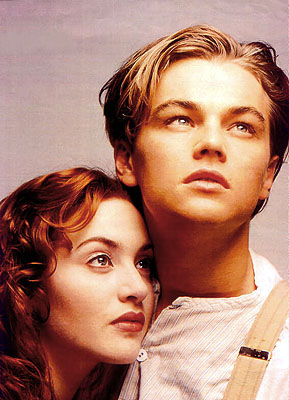
This is Cameron’s first project since the enormous success of “Titanic” and his first TV show ever. He and Eglee saw 1,000 girls for the part of Max before they chose Jessica Alba. They originally wanted a black girl, but Jessica’s ethnic-mix beauty knocked them out. “And she could really act,” Eglee says. “You can get caught up in the magic of these incredible creatures coming in, but they have to be able to act. There was tremendous pressure during casting. We’d be done with the auditions, and the casting agents would say, ‘If you want this girl, you have to make a deal right away.’ That’s when I realized this teen thing had really gone crazy.”
Jessica, who has been acting steadily since she was 12, said at first she didn’t want to do a TV show. She has skin the color of coffee with cream and beautiful almond eyes. She is sitting on the patio of the restaurant Orso, eating pizza for lunch. She is wearing jeans and a rose-colored, intricately wrinkled Issey Miyake top. After co-starring last year in the teen-movie hit “Never Been Kissed,” she got several offers but was wary of getting stuck in the teen-age genre. “They were calling me for everything,” she says, and then adds diplomatically: “I’m so lucky that the teens are in demand. But I don’t really want to be part of that… I just had the faith that I was waiting for something really great.” Since its premise is original, “Dark Angel” has an opportunity to push, at least a little, the boundaries of the genre. “That’s why I did it,” Jessica explains. ”And also I think it won’t just appeal to girls.”
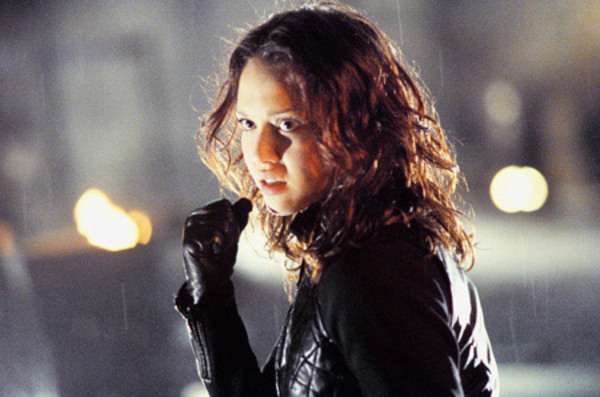
Jessica could have gone to the wrap party for Shane West’s movie, “I’ll Be You,” but she didn’t want to go. “I’d go to say hello to Shane, but I know what that party’s going to be like.” “I’ve seen a lot,” says Jessica, sounding much older than 18.
Two summers ago, Jessica went by herself to a six-week intensive acting program run by Atlantic Theater in Vermont. “It was an eye-opener,” she says. “Out here, everyone just wants you to be natural, natural, natural. There’s no emphasis on training. But only a very few actors are naturals. You have to study. It’s not enough to be cute.”
For the most part, teen actors are not expected to have much acting ability. Mostly, it’s geared to looks. Do you look young? Can you play sexy? Will little girls like you? If you turn out to be talented at acting, that’s nice too, but it’s not the primary criterion. “Leonardo DiCaprio is a great actor,” says manager Scott Karp, ”but he’s not getting $20 million a movie because he’s a great actor, but because he’s a teen idol.”
This is all happening so fast, it’s hard to know how it will end up in, say, five years, when the teen-age audience is edging up in their 20’s. No doubt the money will follow the Demographic. Maybe Jessica Alba will become a star. Maybe [she’ll] marry a dentist. Nobody is looking that far ahead. Well, actually Shane West is. “This is just the beginning,” he assures me. “I don’t think I’ll really peak until I’m 30.” He pauses. “Like it or not, you’re looking at the future.”
